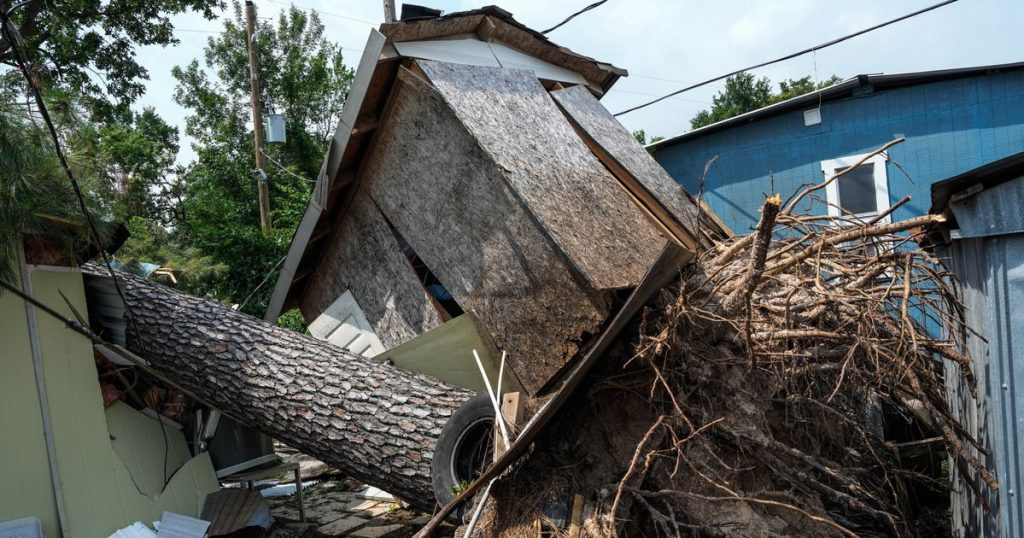A series of powerful storms struck the central and southern U.S. over the Memorial Day weekend, resulting in the deaths of at least 22 people and causing widespread destruction of homes, businesses, and power outages. The storms caused fatalities in Texas, Oklahoma, Arkansas, and Kentucky, occurring just north of an early season heat wave setting records from south Texas to Florida. Forecasters warned millions of people outdoors for the holiday to be vigilant as severe weather was predicted to shift to the East Coast, with a tornado watch issued from North Carolina to Maryland.
Kentucky Governor Andy Beshear declared a state of emergency and reported five deaths in his state, including a 54-year-old man who suffered a heart attack while trying to clear fallen trees in western Kentucky. The death toll of 22 included seven deaths in Cooke County, Texas, and eight in Arkansas. Two additional fatalities occurred in Mayes County, Oklahoma, where guests at an outdoor wedding were injured. The small town of Charleston in Kentucky was hit by a tornado that seemed to be on the ground for 40 miles, leaving residents without power, water, or utilities.
The destruction caused by the storms evoked painful memories for some, like residents of Dawson Springs and Barnsley in Hopkins County, who had already experienced a tornado in 2021. Beshear visited the areas that were affected, offering support to those who lost everything. More than 400,000 customers in the eastern U.S. were left without power, particularly in Kentucky where about 125,000 customers were affected. President Joe Biden expressed condolences and assured federal assistance through FEMA to support the affected regions. The highest alert for severe weather was issued for a broad area across the eastern U.S., stretching from Alabama to New York.
The wave of tornadoes and severe weather in recent weeks has been particularly devastating, with historic numbers of tornadoes in April, and a record number of storms occurring over the past two months. Scientists attribute the sequence of tornadoes to a persistent pattern of warm, moist air, exacerbated by a heat dome pushing temperatures to levels typically seen in the height of summer. The increasing severity of storms worldwide is often linked to climate change, with the warm, moist air at the northern edge of the heat dome contributing to the dangerous conditions. Cities like San Antonio and Dallas saw extreme heat levels, while Florida set new record highs in Melbourne and Ft. Pierce.
The severe weather events underscore the heightened risks posed by climate change and the urgent need for preparedness and resilience measures in vulnerable regions. The impacts of the storms have been devastating for communities already reeling from previous disasters, highlighting the importance of adaptive strategies and coordinated response efforts. As the nation grapples with the aftermath of the Memorial Day storms, the focus remains on supporting affected individuals and communities in their recovery efforts, while also addressing the broader challenges posed by the increasing frequency and intensity of extreme weather events. The need for proactive measures to mitigate and adapt to the changing climate is underscored by the recent wave of severe weather across the central and southern U.S.








